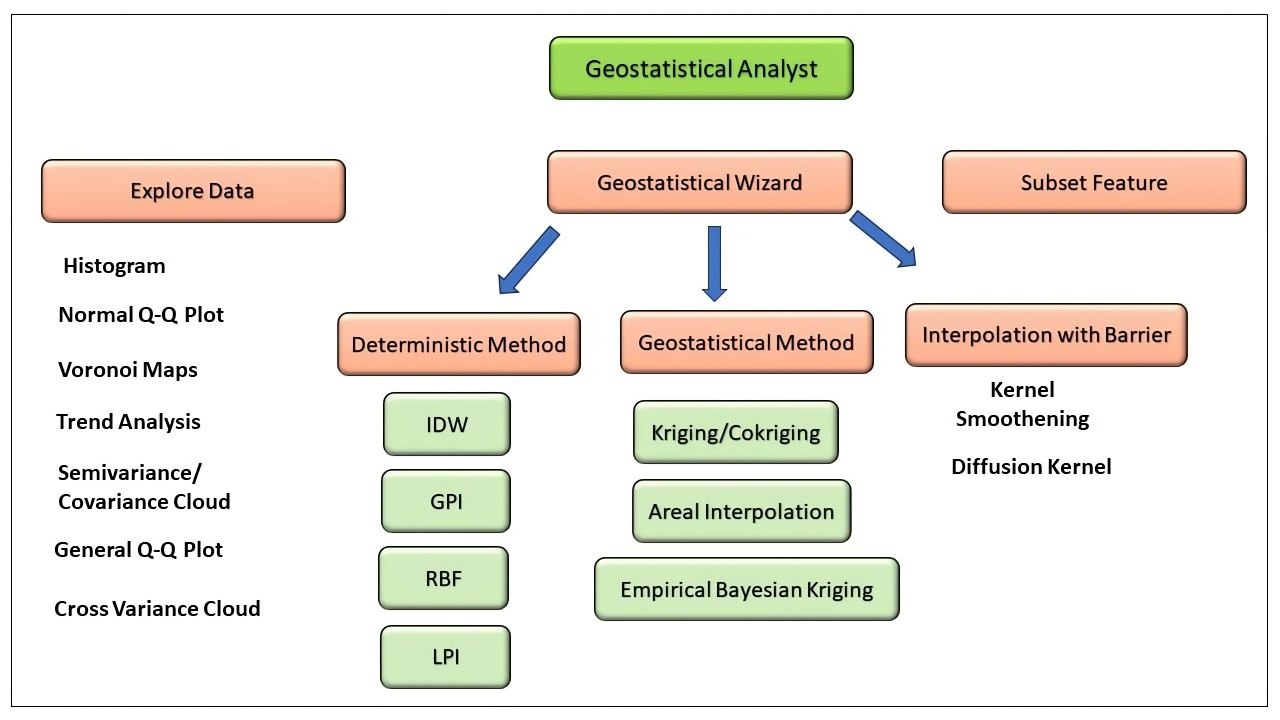Exploring Soil Spatial Variability with GIS, Remote Sensing, and Geostatistical Approach
DOI:
https://doi.org/10.56946/jspae.v2i1.186Keywords:
Geostatistical, error , prediction , spatial analysis , deterministic , environmentAbstract
This article provides a thorough overview of a wide range of advanced statistical methods that have found extensive and resilient applications in the intricate field of spatial modeling for variables in a geographical information system (GIS) platform. The noteworthy triumph of these approaches can be due to a convergence of speed, dependability, precision, and an inherent eco-consciousness that coexist to reshape the scenario of environmental data analysis. The utilization of these models has outshined conventional methods in the present terrain of scientific investigation and environmental analysis, becoming an authentication of innovative research and decision-making procedures. These approaches demonstrate commendable data utilization efficiency by effectively accepting reduced sample sizes. This not only saves resources but also aligns with the ethical imperative of minimizing environmental effects wherever possible. Furthermore, the combination of these statistical techniques with GIS has paved the way that greatly expands their utility. This tool helps to discover deep spatial linkages, extrapolate trends, and findings into actionable insights that are relatable across all disciplines. These approaches encompass not only predictive modeling but also the realms of error assessment and efficiency evaluation. In conclusion, the adoption of these statistical methods is quite useful in facilitating sound decision-making environmental studies. Some of the domains include soil properties, air quality parameters, vegetation distribution, land cover and land use, water quality parameters, temperature and climate variables, natural hazards, urban infrastructure planning, ecological habitats, noise pollution levels, and radiation and exposure assessment. As the trajectory of scientific growth unfolds, these techniques will serve in directing researchers, practitioners, and policymakers to a future where empirical accuracy and environmental consciousness meet synergistically.

Downloads
Published
How to Cite
Issue
Section
License

This work is licensed under a Creative Commons Attribution-NonCommercial-NoDerivatives 4.0 International License.
Funding data
-
UGC-DAE Consortium for Scientific Research, University Grants Commission
Grant numbers F1-17.1/2015-16/RGNF-2015-17-SC-DEL-27579
